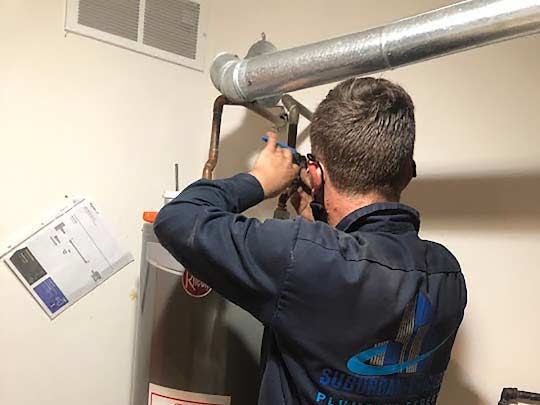
These days it seems possible to DIY almost every aspect of your home maintenance. Many homeowners feel they can tackle any home job if they can find a good YouTube video and the proper tools.
In a way, this is actually a good thing because you not only save money but also gain a deeper understanding of your house. This can help you do a better job of looking after the building.
At the same time, there are some projects in your home you should not DIY, warns RentEasy. Even if you think you can handle them, these projects are just too dangerous to be worth the risk. One such project is installing a hot water heater.
Modern water heaters are not as unwieldy as older models and are considerably easier to install. So, why is it a bad idea to install your water heater yourself if this is the case?
Why you shouldn’t install a water heater yourself
When you think of water heaters, the word that comes to mind is comfort. Water heaters make it possible to take a warm shower when it is cold outside. They provide the hot water you need for laundry and washing the dishes. But water heaters can also be dangerous.
Since water heaters use heat, gas, or electricity and handle water, installing them poses a significant risk of bodily harm and property damage. But those risks are minimized when the device is installed by a professional. In addition to the safety risks, there are also financial risks.
Common mistakes homeowners make when they DIY their water heater installation include.
Discharge tube and temperature relief valve (TPR) errors
A TPR valve set to the closed position is one of the worst mistakes you can make when installing a water heater. The valve’s job is to vent excess pressure inside the tank. Without a functioning TPR valve, your water heater will be liable to explode.
In addition to the TPR valve, the discharge tube for the water heater must be a certain length, of specific materials, and have a specified diameter. Some municipalities also make an overflow tank mandatory, and the discharge water must be routed a certain way. Meeting these requirements may be hard if you are not a professional plumber.
Power and gas shut off in the wrong place
One safety requirement when installing a water heater is that you should be able to see the shut-off switch for the water heater from where the unit is located. This can mean plugging the water heater into a nearby receptacle or ensuring the power breaker is close to the unit. If this is not the case, you must lock the breaker box or electrical switch wherever it is located. This precaution is to prevent dry firing of the water heater.
Improper venting
This applies to gas water heaters only. Proper venting of a gas water heater is critical for the safety of the people who live in the home. Proper venting ensures that carbon monoxide and other toxic gases produced by gas combustion do not build up inside the house.
A flue pipe with a pitch of ¼-inch per linear foot must be installed to allow these toxic gases to discharge outside the home. A licensed plumber knows how to check for back-drafting when installing the flue pipe.
Failing to secure gas and power lines properly
When installing a water heater, it is important to strap it down to keep it from being jarred out of place. If an unsecured water heater is accidentally bumped, it can tip over (if filled with water), fittings can also come loose, and leaks may develop.
In addition to securing it, a water heater must have wheel stops or bollards if installed in a garage. Gas and electric lines also need to be secured in place. Electrical lines must have the additional protection of conduits.
Installing the water heater in the wrong location
You cannot install the water heater in any location inside your home; there are guidelines for where you can install a water heater in the house. The International Residential Code lists prohibited locations for water heater installation; for instance, the water heater may not be installed in a storage closet.
It must be enclosed if the water heater is installed in the bedroom or bathroom. Furthermore, even when a water heater is installed in a location that is not prohibited, there must be easy access to the device.
Installing a water heater without a permit
Water heater installations are included in the types of work that require a permit. When installing a water heater or removing and replacing plumbing, you will need a permit for the work. Inspection is also required for new water heater installations. It is for these reasons that installation costs make up a significant portion of the price of a new water heater.
If you do your water heater installation yourself and something goes wrong, you expose yourself to significant safety risks. There is also a considerable risk of damage to your home. Finally, if a professional plumber does not install the water heater, you will void your warranty.
